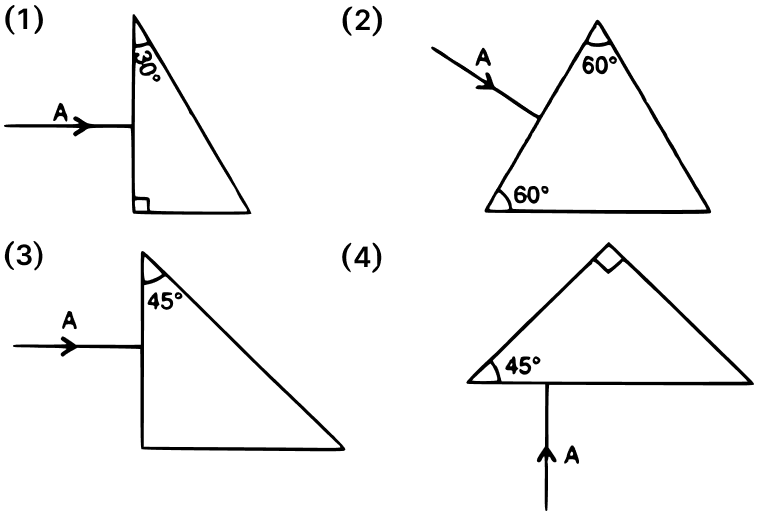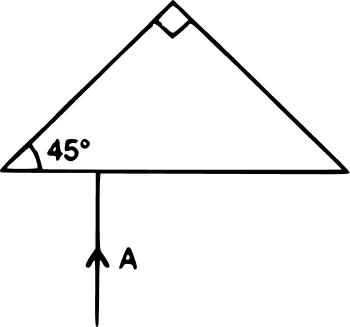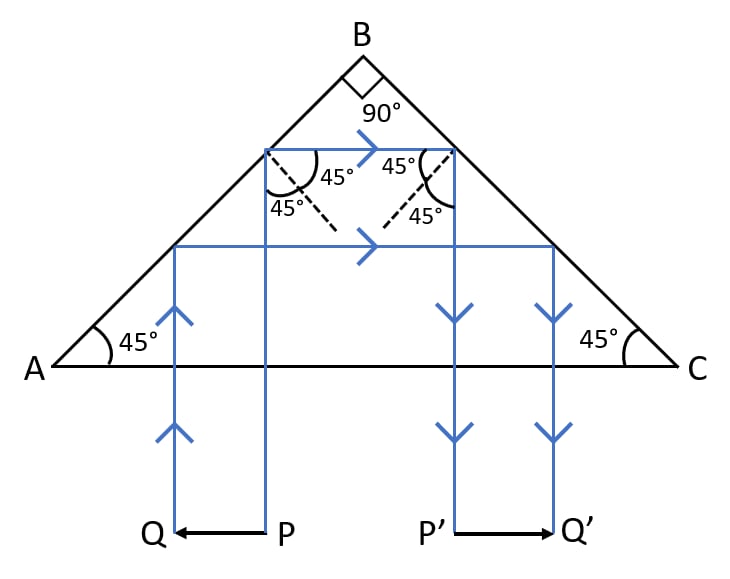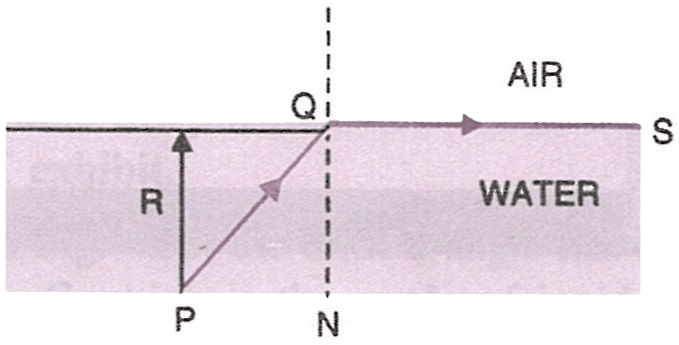Physics
Which of the following figures will depict deviation of ray of light A through 180°

Refraction Plane Surfaces
11 Likes
Answer

Reason — Below is the completed diagram showing the deviation of ray of light A through 180°:

Answered By
9 Likes
Related Questions
A total reflecting prism is:
- right-angled prism
- equilateral prism
- right-angled isosceles prism
- all of the above
An equilateral prism can be used to deviate a ray of light through:
- 30°
- 60°
- 75°
- 90°
In the figure given below, the ray PQ emerging from the object P is refracted along QS. The angle PQN is known as:

- angle of deviation
- angle of refraction
- critical angle
- none of the above
The diagram below shows a light source P embedded in a rectangular glass block ABCD of critical angle 42°. The ray PQ would:
![The diagram below shows a light source P embedded in a rectangular glass block ABCD of critical angle 42°. Complete the path of the ray PQ till it emerges out of the block. [Write necessary angles.] ICSE 2019 Physics Solved Question Paper.](https://cdn1.knowledgeboat.com/img/abp10/5/icse-2019-physics-question-paper-solved-2e-1200x730.png)
- pass undeviated
- suffer refraction
- suffer reflection
- suffer total internal reflection